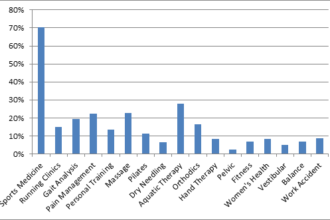 The popular buzz-phrase in contemporary healthcare—price transparency—is a relatively new dynamic in the competitive equation for providers and marketing professionals. And it cuts in two directions. On one hand, price transparency—and knowing the cost of medical procedures in advance—is a major plus for public awareness.
The popular buzz-phrase in contemporary healthcare—price transparency—is a relatively new dynamic in the competitive equation for providers and marketing professionals. And it cuts in two directions. On one hand, price transparency—and knowing the cost of medical procedures in advance—is a major plus for public awareness.
 The popular buzz-phrase in contemporary healthcare—price transparency—is a relatively new dynamic in the competitive equation for providers and marketing professionals. And it cuts in two directions. On one hand, price transparency—and knowing the cost of medical procedures in advance—is a major plus for public awareness. On the other hand, price is not the only consideration for truly wise (and informed) shoppers.
The popular buzz-phrase in contemporary healthcare—price transparency—is a relatively new dynamic in the competitive equation for providers and marketing professionals. And it cuts in two directions. On one hand, price transparency—and knowing the cost of medical procedures in advance—is a major plus for public awareness. On the other hand, price is not the only consideration for truly wise (and informed) shoppers.
The Internet, healthcare reform and other social dynamics have been transforming the everyday patient into informed consumers. And nobody on the care continuum—especially the patient—likes the sticker shock experience of being blown away by a huge bill from the hospital or provider months after the fact. Increasingly, informed consumers and employers shop hard for value in healthcare.
With consumers paying more of the cost burden, marketing professionals are tasked with communicating the features, advantages and benefits that give context to price transparency. What about education, training, experience and professional reputation?
Tools for the informed shopper…and provider.
Doctors, medical practices and their respective business offices might want to compare the charges for common procedures just as the consumer does. An increasing number of price transparency tools are available online to discover where you stand. Some of these include:
GUROO.COM – The guroo.com website, launched by the independent, non-profit organization, the Health Care Cost Institute (HCCI) is one of the most recent entries. They describe the site as “a consumer-focused website that provides national, state and local cost information for common health conditions and services using claims from multiple insurers for more than 40 million insured individuals – numbers that no one else has. The new website is free and accessible to everyone, regardless of whether they have insurance or who their insurer is.”
HEALTHCARE BLUEBOOK – Providers, payors, employers, as well as patient, can use the online Healthcare Bluebook resource to find a “recommended price for health care services.” The list includes elective care, cosmetic medicine, dental, hearing aids and lab services. They say, “The Bluebook price is based on the typical fee that providers in your area accept as payment from insurance companies. This is the price you should have to pay, even if your provider charges more. You can use this price to negotiate with your provider or shop for an in-network provider that charges a Fair Price.”
NEW CHOICE HEALTH – Similarly, “NewChoiceHealth.com is designed to give you, the healthcare consumer, the ability to make informed decisions about where to access common medical procedures regardless of your insurance type. With NewChoiceHealth.com you can easily locate medical facilities offering the procedure you need and then compare accreditations, number of procedures completed, and procedure cost information (coming soon: quality scores & service levels). You can also request a no-obligation quote from participating medical facilities for common procedures such as MRIs, CT Scans, Mammograms, and more.”
OPS COST – OpsCost.com is an online database to compare hospital prices and charges for common procedures at over 3,300 hospitals, based on government data and user reported bills. The dollars are displayed on a chart as well as on an area map. The consumer has the challenge of interpreting and understanding the long list of medical terminology.
FAIR HEALTH – FAIR Health is a consumer cost lookup, using a “database of billions of billed medical and dental services to power a free website that enables consumers to estimate and plan their medical and dental expenditures. The website also offers clear, unbiased educational articles and videos about the healthcare insurance reimbursement system.”
Informing the consumer…
Physicians, medical practices and hospitals have these same tools comparison tools available as the patient/consumer. The complex world of healthcare costs, charges and reimbursements is admittedly bewildering, especially to the general public.
While there are positive benefits of price transparency for the consumer, there is a greater need for healthcare providers and marketing professionals to fully inform and educate prospective patients that price alone is not the only consideration in the purchase decision. The lowest cost for hip replacement surgery, for example, may not inspire consumer confidence in the outcome.







